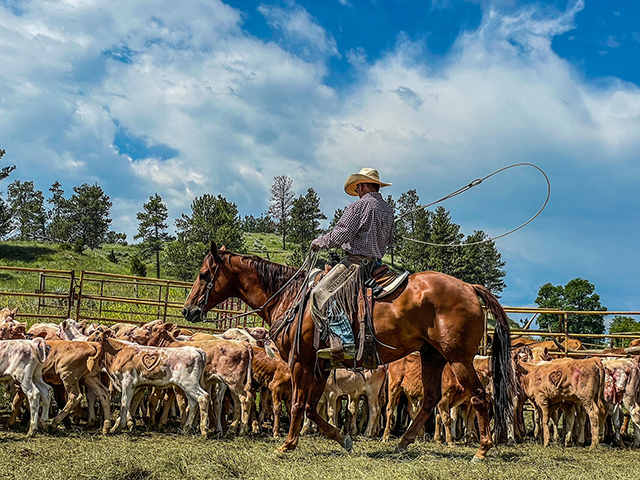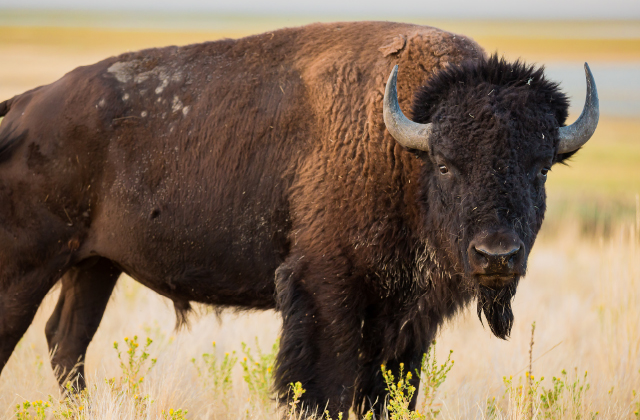Farm & Ranch
A Horse of Many Colors: How Domestication Changed the Horse

By contributing writer Martin Aldridge
The sheer variety of coats equines exhibit is simply astonishing. Everything from the common sorrels and bays, the gaudy paints and appaloosas, to the lesser known perlinos and cremellos, all have been achieved through breeding various types of horses with each other. Breeding for certain colors and patterns is now common
practice, but where exactly did all this diversity come from? Animals evolving in a natural state have been known to display a huge variety of colors and patterns, but colors and patterns in the wild evolve for specific survival purposes.
A recent study published in the Proceedings of the National Academy of Sciences looking at fossil horse DNA from specimens found in Europe and Asia revealed 18
brown colored animals, six black and six with a mutation for spotting.
As it turns out, the very act of domesticating wild animals might have a lot to do with the diversity we see today. The ancestral breed or breeds from which domesticated
horses sprang has become extinct. Wild herds today, like mustangs and other horse and pony populations living in a wild state, are technically considered “feral” since they all developed from domesticated stock.
To read more pick up the March 2014 issue of North Texas Farm & Ranch.
Farm & Ranch
Ag Elsewhere: Wyoming

By Tressa Lawrence
Ranchers across northeast Wyoming and the surrounding areas saw record moisture levels in 2023. The year 2024 has seen significantly less moisture to date.
Farm & Ranch
Ag Elsewhere: Montana

By Lindsey Monk
People are finishing up brandings. Here, Danny Walter is shown getting it done.
Farm & Ranch
Animal Disease Traceability

By Barry Whitworth, DVM
On July 6, 2020, the United States Department of Agriculture Animal and Plant Health Inspection Service (APHIS) posted in the Federal Register a proposal that radio frequency identification tags be used as official identification for cattle and bison. Following a period for public comment, the USDA APHIS released a statement on April 24, 2024, with the amended animal disease traceability (ADT) regulation for cattle and bison. The full press release may be found at https://www.aphis.usda.gov/news/agency-announcements/aphis-bolsters-animal-disease-traceability-united-states. Under the new rule, cattle and bison will need to be identified with tags that are both visual and electronic.
The USDA defines ADT as knowing where diseased and at-risk animals are, where they have been, and when the animal disease event took place. A system that allows for efficient traceability of livestock in the United States is essential for animal health and reducing the economic effect of a foreign animal disease outbreak and other diseases on livestock producers as well as others whose well-being depends on livestock production.
To read more, pick up a copy of the July issue of NTFR magazine. To subscribe by mail, call 940-872-5922.
-

 Country Lifestyles1 year ago
Country Lifestyles1 year agoScott & Stacey Schumacher: A Growth Mindset
-

 Country Lifestyles7 years ago
Country Lifestyles7 years agoStyle Your Profile – What your style cowboy hat says about you and new trends in 2017
-

 Equine10 months ago
Equine10 months agoThe Will to Win
-

 HOME7 years ago
HOME7 years agoGrazing North Texas – Wilman Lovegrass
-

 Country Lifestyles4 years ago
Country Lifestyles4 years agoAmber Crawford, Breakaway Roper
-

 Outdoor9 years ago
Outdoor9 years agoButtercup or Primrose?
-

 Country Lifestyles8 years ago
Country Lifestyles8 years agoDecember 2016 Profile, Rusty Riddle – The Riddle Way
-

 Country Lifestyles8 years ago
Country Lifestyles8 years agoJune 2016 Profile – The man behind the mic: Bob Tallman






